Afghanistan is navigating a complex path in governance and foreign policy. The Islamic Emirate is still adjusting to its role, facing internal divisions and diplomatic hurdles. Governance remains a challenge, with unresolved issues like girls’ education and ties with militant groups such as the TTP. Economic struggles persist, and the end of U.S. humanitarian aid—around $50 million per month—adds further pressure. With Trump back in power, Afghanistan is forced to adopt hedging diplomacy, seeking alternatives in trade and alliances.
The Chahbahar Port Project (CPP) was seen as a key trade route for Afghanistan and Central Asia. However, this potential is now in jeopardy. Trump has revoked the U.S. sanctions waiver for the Iranian port, which once allowed humanitarian shipments to Afghanistan and facilitated Indian trade. India had secured this exemption in 2018 and later signed a 10-year agreement to manage a terminal at CPP. With the exemption gone, Afghanistan must reconsider its trade routes as part of its hedging diplomacy strategy.
Kabul is engaging with China, Russia, and Iran, leveraging its geographic position and natural resources. These interactions focus on economic cooperation, border security, and counterterrorism efforts. However, formal recognition of the Taliban government remains elusive. Afghanistan’s diplomatic approach often operates through informal channels, prioritizing geopolitical advantages over legitimacy. Unlike Western nations, China, Russia, and Iran are not bound by rigid diplomatic protocols, making them suitable partners for Afghanistan’s hedging diplomacy.
China is particularly interested in Afghanistan’s vast mineral wealth, valued at over $1 trillion, including rare earth elements. Despite this interest, Beijing remains cautious. It has not yet opened the Kabul-Kashgar route through the Wakhan Corridor, fearing instability in its Xinjiang region. Concerns about the East Turkestan Islamic Movement (ETIM) and the Taliban’s religious influence make China hesitant to deepen engagement.
Russia’s focus is on security and intelligence cooperation with the Taliban. Moscow seeks to counter the Islamic State-Khorasan (IS-K) threat, particularly in Central Asia. Tajikistan is of primary concern, given its vulnerability to IS-K operations. For Russia, Afghanistan plays a role in its broader geopolitical game, countering Western influence in the region.
Last September, foreign ministers from China, Iran, Pakistan, and Russia met to discuss counterterrorism efforts. The Taliban’s operations against IS-K, TTP, and ETIM were key topics, alongside concerns over governance and inclusivity. While Kabul seeks foreign investment, unresolved security and governance issues remain a major obstacle.
Despite its rigid stance on governance, Afghanistan is pursuing economic partnerships. Since 2023, the Taliban has worked with Iranian and Pakistani firms on mining, infrastructure, and energy projects. Their strategy focuses on securing economic aid from China, expanding security cooperation with Russia, maintaining ties with Iran to balance Pakistan’s influence, and improving relations with India. This multipronged approach reflects the core of Afghanistan’s hedging diplomacy.
However, Afghanistan’s diplomatic outreach is shaped by self-interest. China seeks economic gains and regional stability. Russia wants to curb terrorism and challenge Western influence. Iran prioritizes trade while managing sectarian differences. Each country engages with Kabul based on its own strategic calculations, not out of genuine alliance or goodwill.
India’s renewed engagement with Afghanistan has caused concern in Pakistan. The January 2025 meeting in Dubai between Indian Foreign Secretary Vikram Misri and Afghan Foreign Minister Amir Khan Muttaqi signaled a shift in Indo-Afghan relations. Historically, Afghanistan and India shared close ties, from the Afghan Lodhi Empire to the Mughal era and even during British rule. Afghan traders were deeply embedded in Indian markets, and Indian culture, cinema, and trade had a strong presence in Afghan society.
However, the geopolitical landscape has changed drastically since the U.S. and NATO occupation. Pakistan played a critical role in supporting the Afghan Taliban’s resistance, despite accusations of a double game. Islamabad’s strategic goal was to ensure that Afghanistan remained aligned with Pakistan, preventing a two-front security challenge involving both India and Afghanistan. Pakistan’s expectation of diplomatic loyalty from Afghanistan is based on its long-standing support, and the Taliban is now being reminded of this reality.
Under Pashtunwali’s code of hospitality (Shegara) and Islamic solidarity, Afghanistan is expected to stand by Pakistan, not side with its rival. Pakistan has provided continuous support to Afghanistan through decades of turmoil. It now views India’s growing influence in Kabul as a direct threat. For Islamabad, protecting its strategic interests is a red line. Afghanistan must recognize this if it hopes to maintain a stable relationship with its most crucial neighbor.
Beyond the Taliban’s strained ties with Pakistan and its balancing act through hedging diplomacy, Afghanistan must consider its economic realities. Central Asia’s trade routes, including those linked to Chahbahar, remain uncertain. Without Pakistan’s cooperation, these routes may never fully materialize. If Iran were a viable alternative, its Sistan-Balochistan region would have replaced Pakistan’s Karachi and Gwadar ports long ago.
There is also a growing frustration among Pashtuns in Khyber Pakhtunkhwa and Balochistan. Many now view Afghanistan as ungrateful, despite Pakistan’s decades of support. Islamic values and Pashtunwali encourage generosity and assistance, but goodwill is not limitless. If Afghanistan does not reconsider its approach, it risks losing the goodwill it has relied on for years.
India, on the other hand, should wait for a broader reconciliation with Pakistan. Islamabad is open to peace, but it will not accept pressure to rush the process. Afghanistan’s hedging diplomacy may give it temporary leverage, but its long-term stability depends on making rational, strategic decisions.


